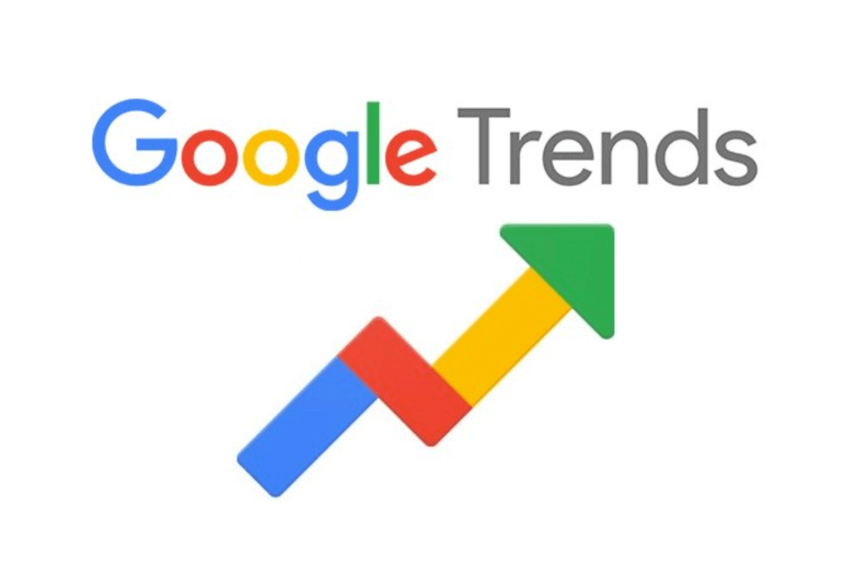You can do both – most of our content is paid for by our suppliers, but you can weave products in subtly, or literally, as long as the creative is strong enough.
@currys Ninja Double Stack Air Fryer – available at Currys ✨ #currys #trend #viral #ninjaairfryer #ninjastackairfryer #ninjadouble ♬ original sound – Currys
Almost all of our content features product in some form
@currys Our colleagues will do anything for the content 🥶 Search on our site 🔎 LUMI THERAPY Recovery Pod Max Portable Insulated Ice Bath #currys #icebath #currys #electronics ♬ original sound – Currys
Google is easily considered the most popular search engine in the world. Do you have a question? Just Google it. Do you want to find the closest coffee shop? Just Google it. But have you ever been curious about the searching trends that other users are involved in? There’s a way of gaining access to this valuable information.
It’s time to introduce Google Trends. It’s a resource that had its beginnings in 2006. Trends allows you to gain insight into how people use Google’s search feature. This resource started out a bit slow. The data was only updated sporadically. But nowadays, Google Trends is a huge resource for the SEO community due to all of the information gathered over time.
Are you an online marketer who’s looking for an upper-hand in the SEO community? If so, then you need to become extremely familiar with Google trends. Let’s investigate further.
Some Examples: Using Google Trends
Let’s begin with a couple examples of what Google Trends is capable of. There was an article in the New York Times which was published in 2014. This article presented a study that was conducted by using Google Trends data. The investigator found that parents were 2.5X more likely to ask Google about the giftedness of their sons in comparison to asking about the giftedness of their daughters. That’s an interesting find, right?
Here’s another example. There’s an article online that describes a frequent Google-user who’s obsessed with the song, “Old Town Road.” The user claims that she was curious about when “Old Town Road” was being searched at its peak popularity. She wanted to know if this peak matched up with the time that she first started searching and listening to the song on repeat. She hopped onto Google Trends, and found out that the peak of interest for this search was around mid-April of 2019, which is when she first started listening to the song.
These 2 examples show just how powerful of a tool Google Trends can be. Anyone who is looking to take online marketing to a new level will reap major benefits from using Google’s extreme data resource. You’ll be able to find information linked with geographical location, category, specific content topics, and many more options. If you’re ready to take your SEO efforts to a new level, then it’s time to dive head-first into Google Trends.
If You’re Just Starting Out
Are you inexperienced with Google Trends? If so, then it’s a good idea to understand some basics about how this tool works. The data on Google Trends is presented in a way that makes it easier for the users to understand the differences between multiple sets of data. Below are some points to keep in mind while using Google Trends.
•Every data point on Google Trends will be compared in a relativistic way. The points are sectioned based off of geographical location and time ranges represented.
•The scale on the Google Trends chart is numbered from 0 to 100. These numbers are based off of the proportion of the specific topic in comparison to all topic searches.
•Even though 2 or more geographical regions may have the same amount of searches for a specific topic, this doesn’t mean that their search volumes will be the same.
Do you have the basics downpat? You’ll need to keep this information in mind as your venture through this article. Let’s jump right into the SEO benefits of Google Trends.
Using Google Trends For SEO Keyword Research
Now that we’ve covered the basics, it’s time to learn how to use Trends to your advantage as a digital marketer. Let’s start off with keyword research. It may seem obvious that Google Trends can be used to research keywords. However, many members of the SEO community skip over Trends, and move straight on to the Keyword Planner resource instead. While Keyword Planner will help you with keyword research, it’s important to throw Trends into the mix as well. But why? It’s because Trends is the perfect complement to other keyword research tools.
For example, Google Trends will let you know of the up-and-coming keywords that have begun rising in popularity. With this information, Trends is able to give suggestions for new keywords. This information is vital for a marketer who’s researching keywords. Google Trends will give highlights of the recent breakthrough keywords that have gained some speed in searches.
You’re going to have access to a lot of fresh, new ideas for keywords whenever you use Google Trends. Why is this important? Well, if you can gain traction on a keyword before it peaks, then you’re already ahead of the competition. It’s pivotal that you pay attention to trending queries. Google Trends is going to help you accomplish this.
Google Trends: Comparing Searches
Google Trends has made some significant changes since it was first launched. Nowadays, there are filters that can be used to categorize your data. You can filter your searches for news, images, and even shopping. This filtering can be achieved by using the drop-down menu offered by Trends. You’ll be able to compare different searches like never before. And this is a huge benefit to the SEO community.
If you’re using a filter for image searches, you’ll be able to obtain data from 2008 up to the present date. There are loads of search queries for images, so you’ll probably be interested in spending a lot of your time in this filter. As mentioned earlier, you’ll be able to section this data based off of the geographical location of the searches. You’ll be able to find keyword suggestions as well. Prepare to take your SEO optimization to a new level.
Are you interested in comparing search queries from multiple geographical locations? Here’s the good news: this is possible with Google Trends. For example, you can do a comparison of dog searches in the USA with cat searches from the UK. Pretty convenient, right? Remember that Google Trends takes a relativistic approach when comparing its data points.
Google Trends: Seasonal-Peak Predictions
When it comes to SEO research, it’s important to focus on the demand of the consumers. During what time frame is a specific search the most popular? Let’s use the Olympics as an example. By using Google Trends, you can see that people search for the Olympics mostly during the times that the Olympics are taking place. This is every 2 years. Using data from the past, you can predict the seasonal peaks for searches on the Olympics.
When it comes to predicting seasonal peaks, it’s also important to use Keyword Planner and AdWords as well. Keeping in mind that Google Trends uses a scale of 0-100, you don’t have actual data on how many searches are performed. This is the relativistic approach of Trends. But when you piece it together with Keyword Planner and AdWords, you have all the information you need to predict seasonal peaks and get somewhat of an estimate on the total amount of searches that will occur. This is a golden opportunity for SEO strategy.
Even without Google Trends, you can probably intuitively predict the seasonal peaks of searches for the Olympics. However, let’s consider a less-predictable topic, such as clothing. Google Trends is going to help you find those target keywords before your competition is able to pull this off. Be sure to take full advantage of what Google Trends has to offer.
Assessing Trending Topics
Google Trends uses real-time data to give you the information that you’re looking for. This is pivotal whenever it comes to assessing the current trends within different geographical locations. The databases of Google are going to provide you with the most reliable data out there. No other SEO software can compare to the benefits that you are given by using Google Trends. And you can get all of this information free of charge.
Here’s some good news: you can access current trending topics right from the homepage of Google Trends. Do you produce a lot of reactive content? If so, then Trends is going to be your best friend. When you select a trending topic/story, you will be directed to different featured articles. You’re going to get detailed information involving the current interest of the topic. You’ll have access to articles that have been published within the past day.
The data doesn’t stop there. You’ll be able to find this trending content by geographical location. What’s popular in one area may not be as popular in another area. If you pair Google Trends with an SEO tool such as Ahrefs, you’ll be able build your portfolio of backlinks by using the URLs that are listed for the trending articles.
If reactive content is your specialty, then you need to hop aboard the Google Trends train immediately. You’re not going to find a resource with data as reliable as this. Real-time data is going to show you what’s currently trending. Use it to your advantage, and stay ahead of the competition. This fresh content is going to keep you on your toes.
Google Trends: A Golden Asset For SEO Optimization
Google Trends started out in 2006. It wasn’t much of a resource in its early beginnings. But now that time has passed, Google has a database filled with information that can be found by using Trends. It’s truly a golden resource when it comes to SEO strategizing.
Once you understand the relativistic approach that Google Trends uses with its data points, you’re all set to reap the benefits that it provides. You can use it for keyword research, comparing search trends, predicting seasonal peaks, and assessing trending topics to aid in the creation of reactive content.
As an SEO professional, you’ll want to keep other tools in your arsenal as well. When you pair Google Trends with other tools such as Ahrefs, Adwords, and Keyword Planner, you’re well on your way to staying ahead of the competition. Go for the gold by going with Google Trends.







